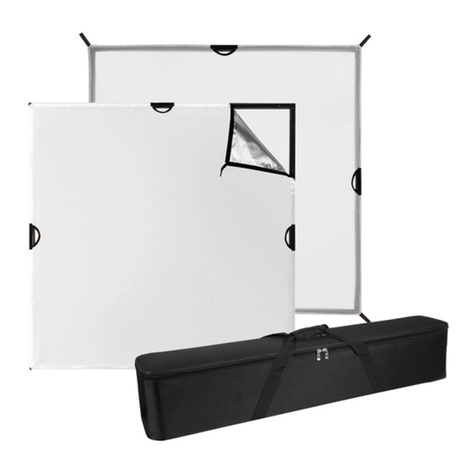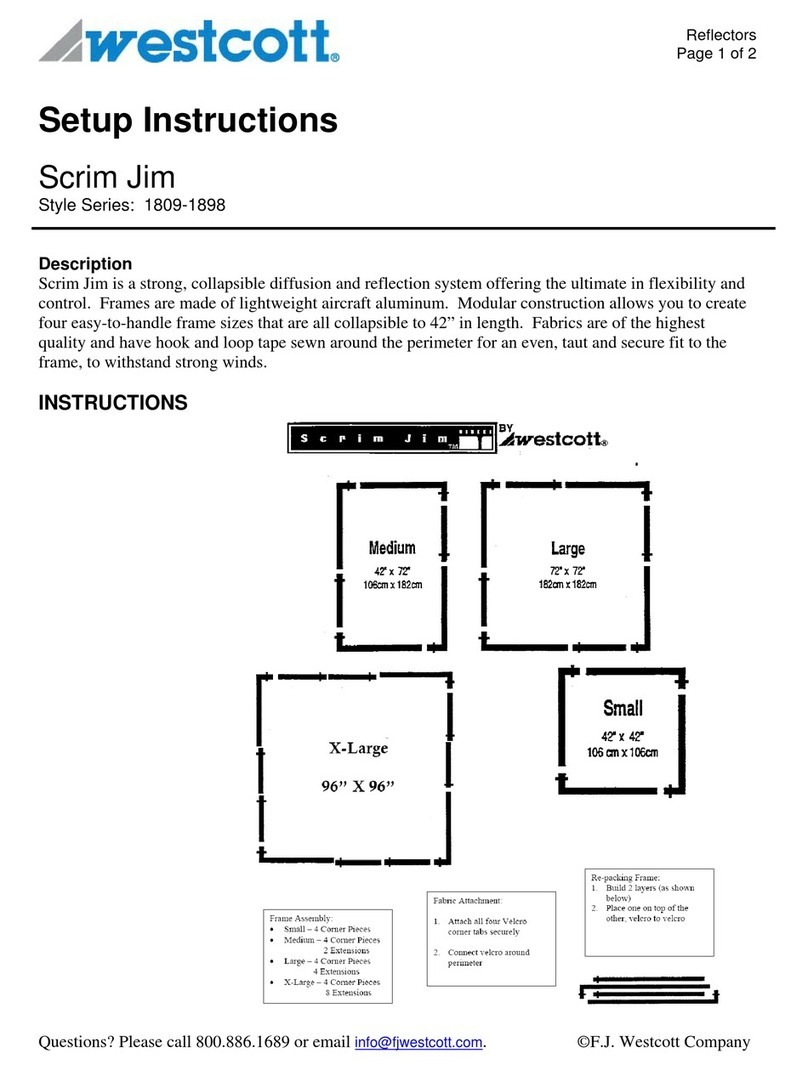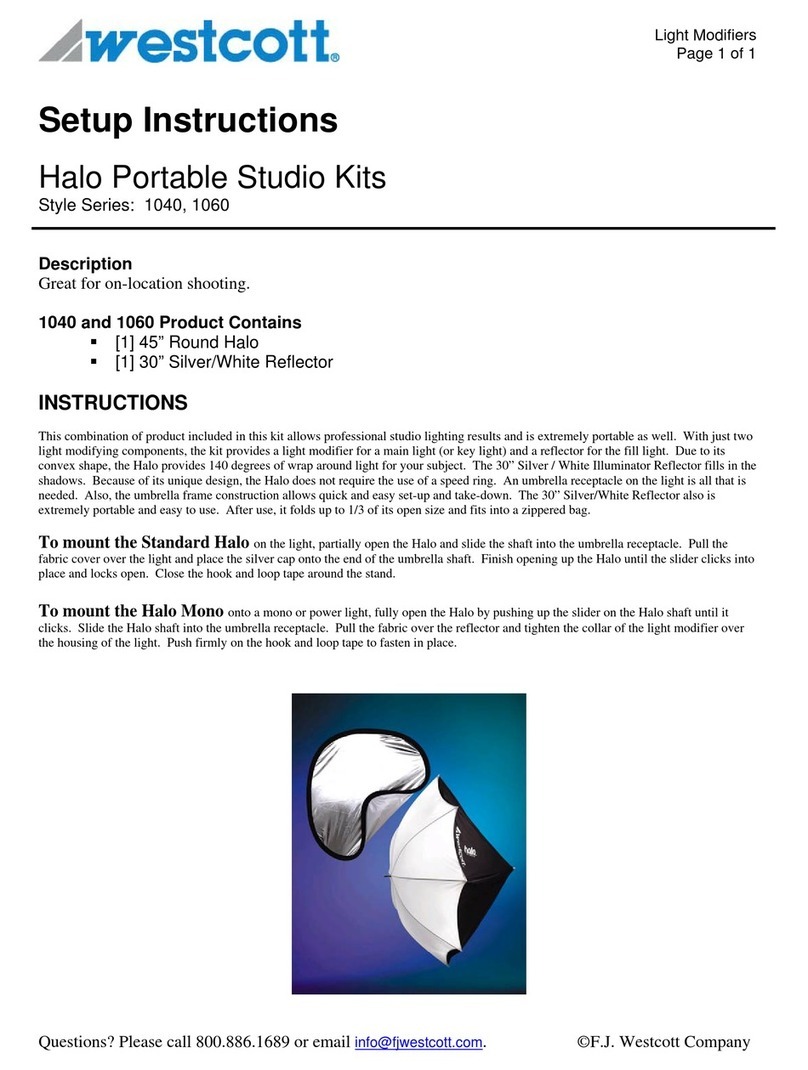Westcott FJ80-SE Series User manual
Other Westcott Camera Accessories manuals

Westcott
Westcott 1824 Manual

Westcott
Westcott 1809 Manual
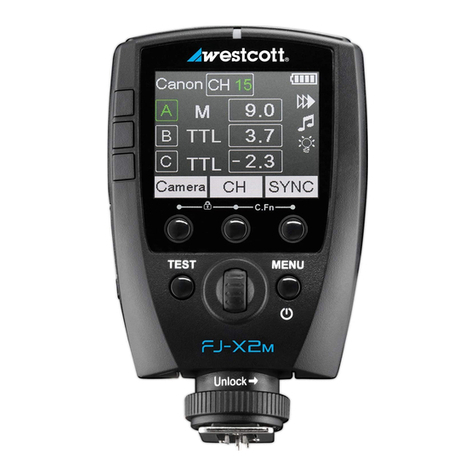
Westcott
Westcott FJ-X2m User manual

Westcott
Westcott 1858 Manual

Westcott
Westcott 1852 Manual

Westcott
Westcott drop Pro User manual

Westcott
Westcott 1881 Manual
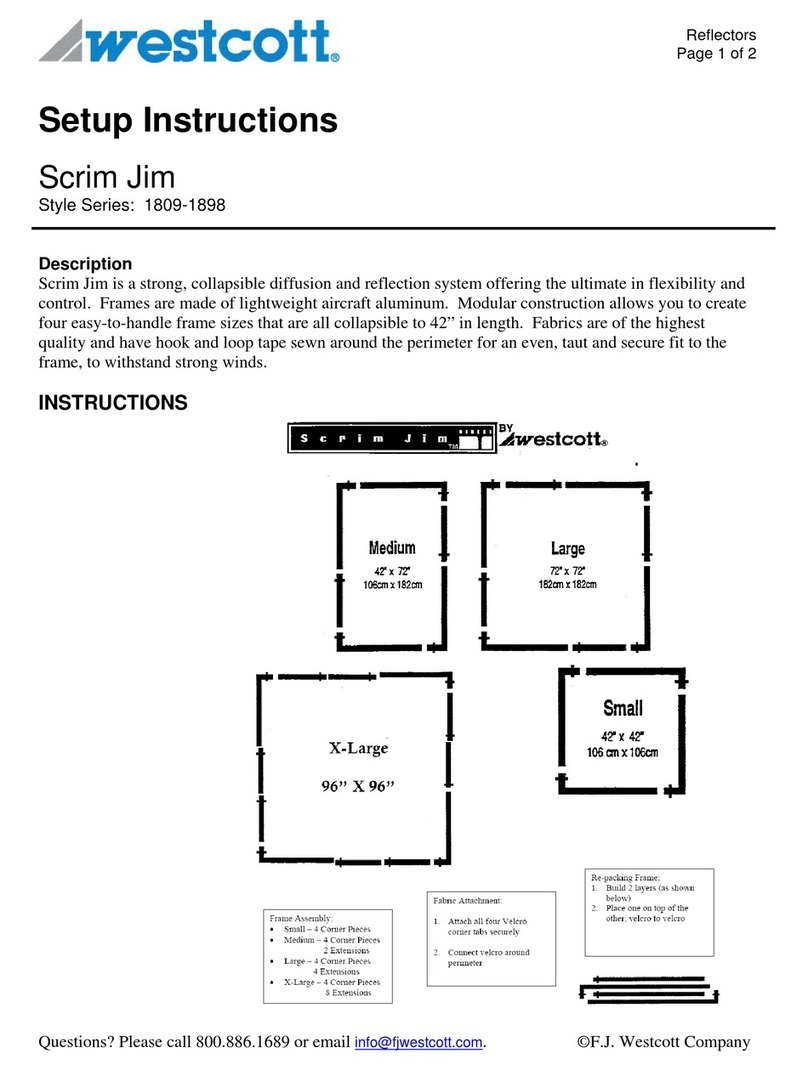
Westcott
Westcott 1856 Manual

Westcott
Westcott L60-B User manual

Westcott
Westcott 1848 Manual
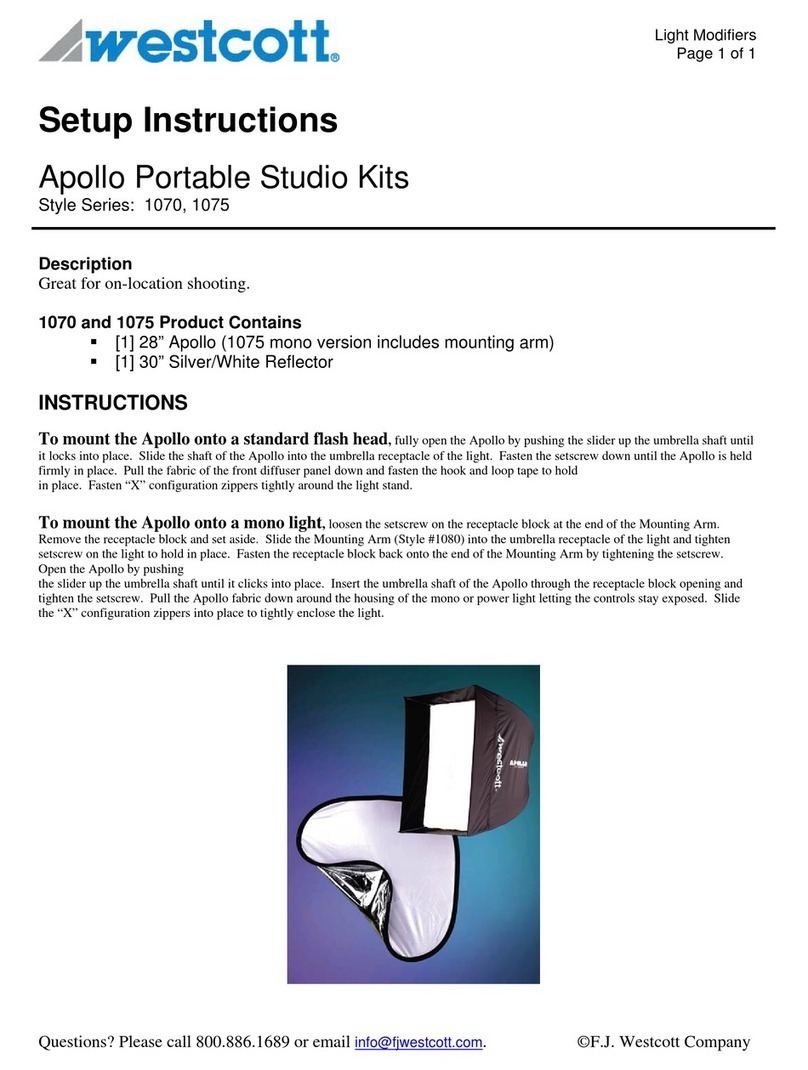
Westcott
Westcott Apollo 1070 Manual

Westcott
Westcott 1411 Manual

Westcott
Westcott 1860 Manual
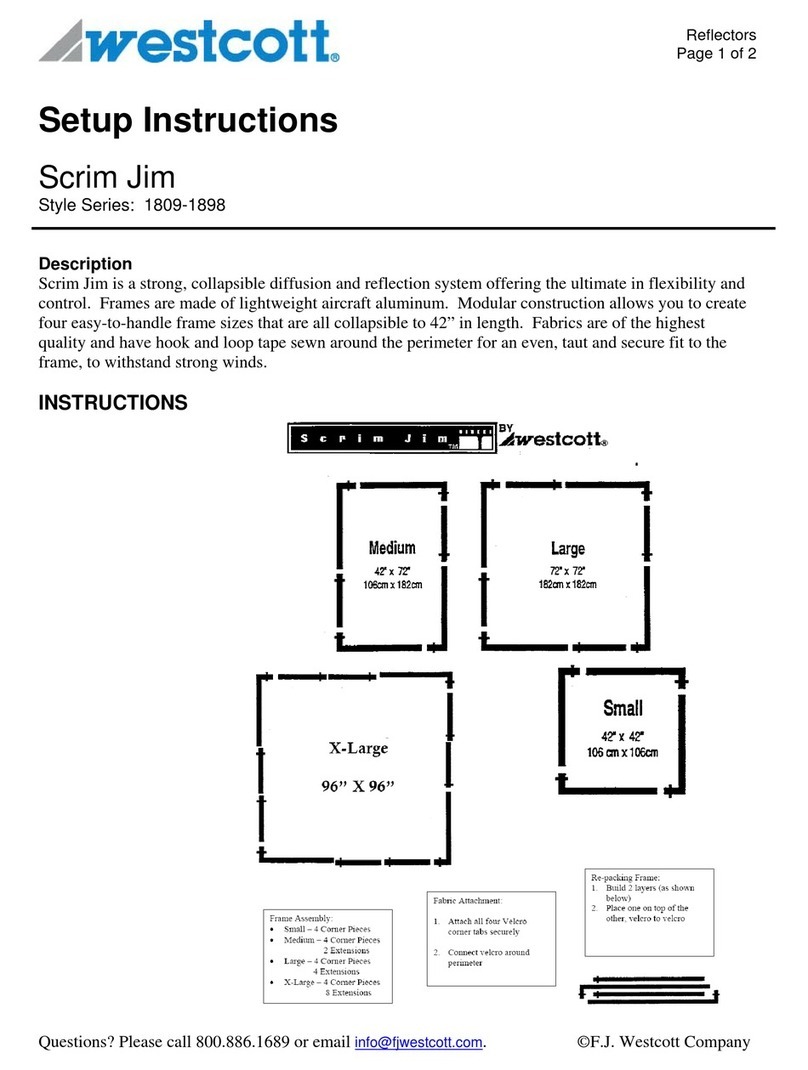
Westcott
Westcott 1875 Manual
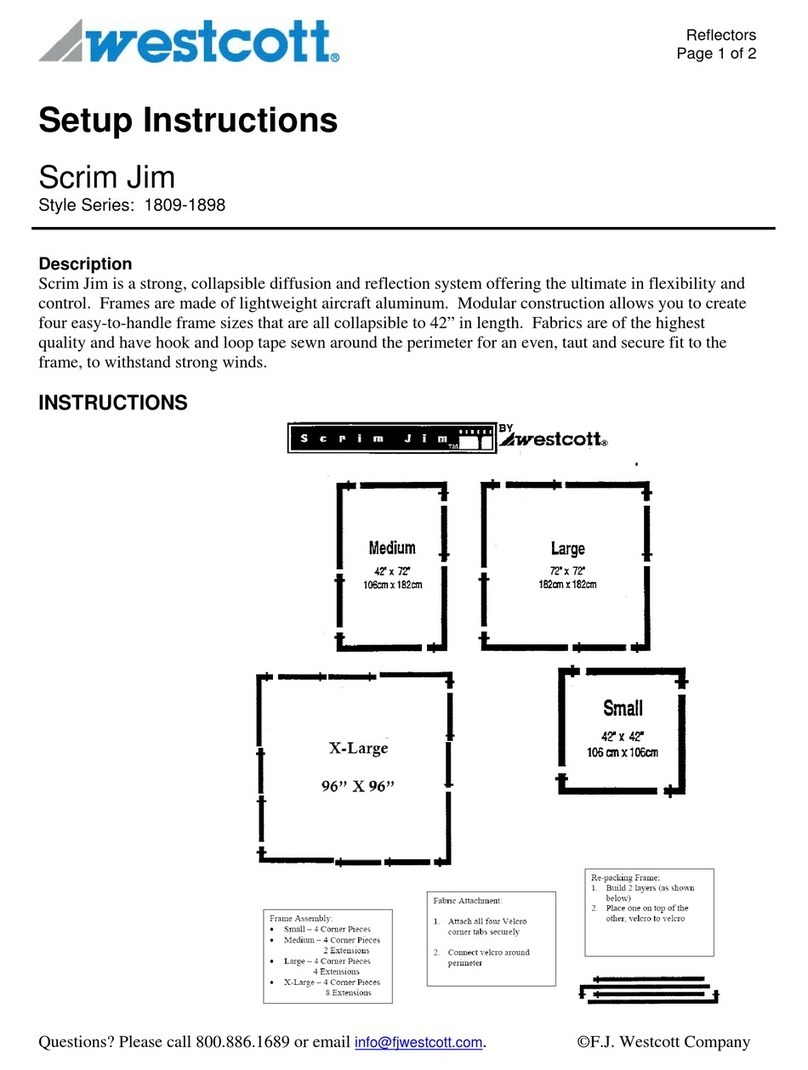
Westcott
Westcott 1861 Manual

Westcott
Westcott TriFlector 2930 Manual

Westcott
Westcott SkyLux User manual

Westcott
Westcott 1849 Manual

Westcott
Westcott FJ-X3 User manual

Westcott
Westcott FJ400 User manual
Popular Camera Accessories manuals by other brands

Trojan
Trojan GC2 48V quick start guide

Calumet
Calumet 7100 Series CK7114 operating instructions

Ropox
Ropox 4Single Series User manual and installation instructions

Cambo
Cambo Wide DS Digital Series Main operating instructions

Samsung
Samsung SHG-120 Specification sheet

Ryobi
Ryobi BPL-1820 Owner's operating manual
